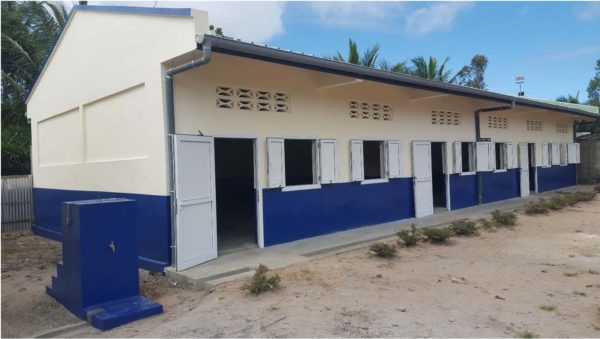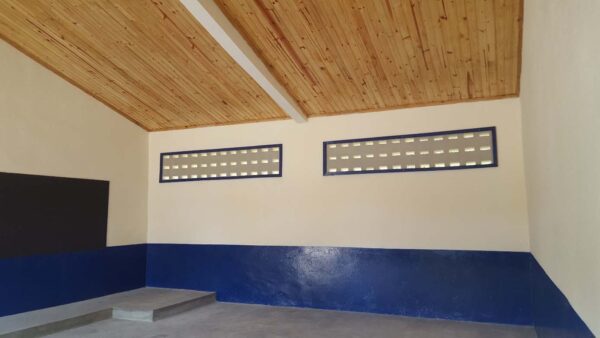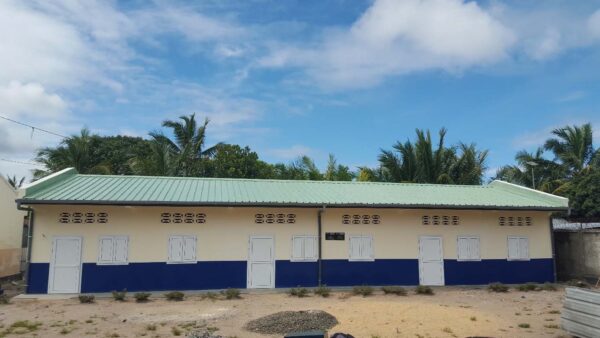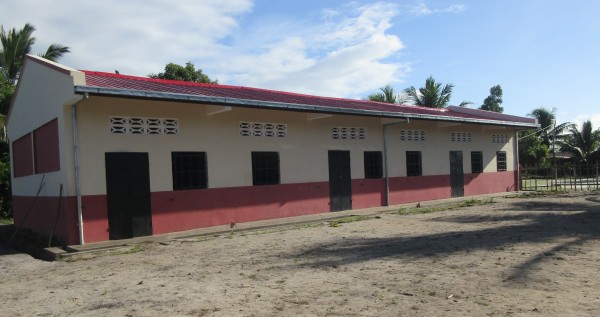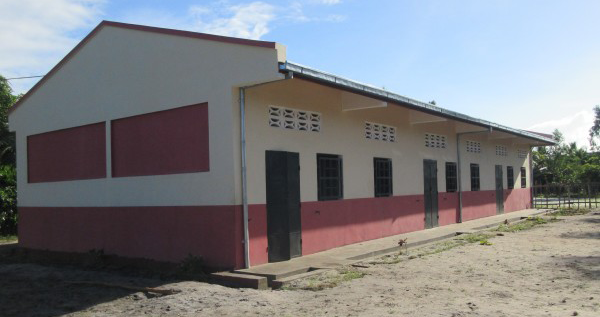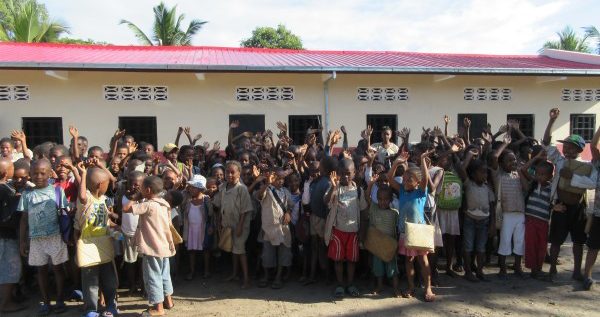2015 – Primary school – Ambatofitatra
Update: 2015
Location: The fokontany of Ambatofitatra, Rural Commune of Sambava, District of Sambava, Région Sava is located 1352 kms from the capital, Antananarivo. Access is by air and involves a 2 hour flight. Ambatofitatra village is 2 kms from Sambava (15mn) on the tarmac road to Andapa, (RN 5) followed by 2kms on unpaved road (10mn)
2015 replacement schoolhouse
BRIEF PROJECT OUTLINE
Rationale
Like most villages in rural areas, Ambatofitatra is a deprived and very poor community. The population make their living from cutting and selling timber, agriculture and cattle raising, and live in harsh and primitive conditions – reflecting the extreme poverty that exists throughout Madagascar.
Typical of most villages in rural areas, children access school on foot – some of them travelling a considerable distance with nothing to eat or drink between leaving home and returning from school several hours later.
Ambatofitatra State Primary School was created in 2007 by the villagers using their own meagre resources. The school was completely destroyed by a cyclone and re-built in 2012 by a French charity and the Sambava municipality – with two classrooms made half of concrete blocks and half of timber which remains in good condition.
In 2013, to cope with the lack of space and an increase in the number of children, the villagers using local materials (basically sticks and leaves) built another classroom – which is now in very poor condition. When it rains water streams down through the roof onto the children and their books. If it is available the children are taught in a store room used for rice and cassava. But if not they have to be sent home. This greatly reduces the number of hours of tuition and the effectiveness of the teaching – having an inevitably negative impact on exam results.
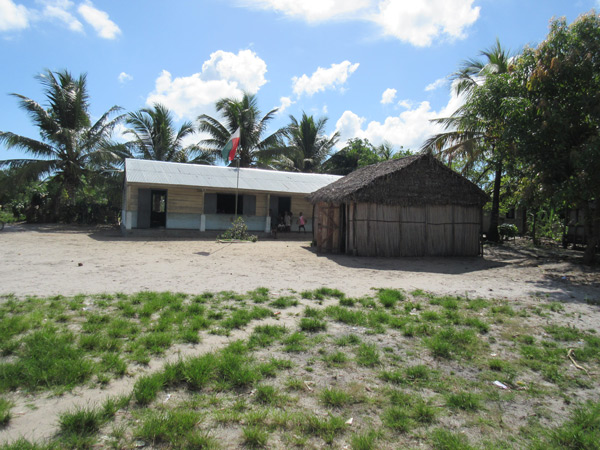
Normally state primary schools only have classes in the morning. But due to the lack of space Ambatofitatra Primary School has two daily sessions, with some children (levels CE; CM1; CM2) attending school only in the morning from 07h30 to 12h30, and the rest (levels CP1 and CP2) from 12h30 to 17.30. Conditions at the school, where there is a shortage of teaching materials and classroom furniture, contribute to the high drop-out rate. The school benches are designed for two children, but they are usually occupied by 4 or even 5 children. The school has neither latrines nor easy access to safe clean water. The school well is in bad condition and the water polluted and unusable. In general conditions at the school for students and teachers are unsatisfactory and far from meeting acceptable standards of hygiene and health.
310 children currently attend the school, 85% of whom live some considerable distance away. And an estimated 203 children of school age are not currently in education due to the lack of space – a number that increases steadily at the start of each school year. This situation can only get worse in the years to come as more children reach school age in this and neighbouring communities. Unless the school’s capacity is increased those children whose parents allow them to attend school will have no choice but to travel even further to any other school that can accommodate them.
Ambatofitatra Primary School has 5 teachers. The Ministry of Education currently meets the cost of 4 civil servant teacher. The other one, recruited locally, is paid partly in cash and in kind, (cassava and sacks of rice) by the Association of Parents of children who attend the school.
Objectives
- To build three cyclone-proof classrooms, equipped with school benches, desks for the teachers, bookshelves and cupboards. The school will provide basic facilities, but be light, airy and welcoming.
- To construct a three compartment Ventilation Improved Pit (VIP) latrine (separate facilities for boys and girls).
Main Inputs
The project has been visited and evaluated on the spot. The sacrifices parents have already made to educate their children merit support and encouragement. They have indicated their willingness to provide free labor and supply locally available building materials as their contribution to building the new school. The plot of land on which the new school will be built is part of the school property. The second half will be paid only on receipt of a satisfactory, illustrated report, including receipted bills, showing that work is progressing.
Main Outputs
This community has shown its willingness to educate its children. Their full cooperation and participation is assured. Replacing the existing school is greatly needed, and will be appreciated. Giving the community better access to basic education will in due course make an important contribution to development, better living conditions and the fight against poverty.
Project execution: August 2015
Project completion: December 2015
Project update: November 2020

